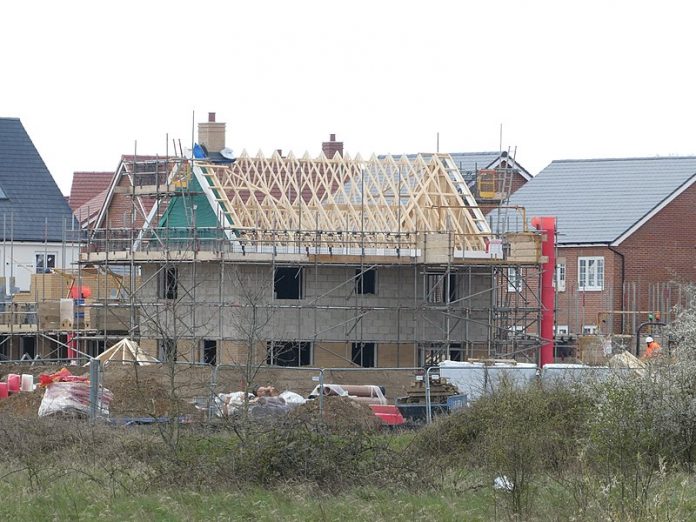Housing industry professionals are urging the Biden Administration to back off plans by the U.S. Department of Housing and Urban Development (HUD) and U.S. Department of Agriculture (USDA) to mandate the 2021 International Energy Conservation Code (IECC), which they argue will significantly increase the cost of new homes and will shut many potential buyers out of the market.
The IECC, created by the International Code Council in 2000 and updated every three years, is a model code for establishing minimum design and construction requirements for energy efficiency. The 2021 IECC is being adopted as part of HUD’s new Minimum Energy Standards for new housing construction. According to HUD, these new standards apply “tried and true cost saving insulation, air sealing, and efficient windows, lighting, and heating and cooling systems to lower monthly energy bills for families.”
HUD claims the new standards will save the average single-family homeowner an estimated $25,100 in energy bills over the course of a 30-year mortgage, or a $15,000 net savings per household after accounting for the increases in mortgage payments, mortgage insurance premiums, and property taxes from the added cost of the energy investment.
Ninety Year Payback
Carly Harris, chairman of the National Association of Homebuilders (NAH), disputed HUD’s claims in a press release, saying the payback for the energy efficiency mandates would take nearly 100 years.
“Without adequate review and consideration of how it will affect home buyers or renters, HUD and USDA have rammed through a rule that will do little to curb overall energy use in the U.S. but will exacerbate the housing affordability crisis,” Harris said in the NAH release. “Studies have shown that building to the 2021 IECC can add up to $31,000 to the price of a new home and take up to 90 years for a home buyer to realize a payback on the added cost of the home. “This unreasonable trade-off for a new home buyer will do little to offer meaningful energy savings for residential homes and apartments,” Harris concluded.
Higher Costs, Little Savings
Leading Builders of America (LBA), a builder advocacy group, estimates 44 of the 50 states would be impacted by higher building costs due to the adoption of the 2021 IECC, ranging anywhere from $8,859 to $22,572 per home. “Severe” impact would be felt in Arkansas, Idaho, Indiana, Kentucky, Louisiana, Oklahoma, South Carolina, Tennessee, Utah, Virginia, and Wisconsin. Alabama, Georgia, Illinois, Iowa, Michigan, New Mexico, North Carolina, Ohio, and West Virginia would see “moderate” impact from the new regulations.
A 2021 study by Home Innovation Research Labs, prepared for the NAH, estimated the 2021 IECC regulations would add between $3,000 and $12,000 to the cost of a typical single-family home, depending on location and the level of efficiency chosen. The U.S. Department of Energy puts this added cost at between $1,000 and $4,000 per house.
The LBA also notes that first-time buyers of new homes using Federal Housing Authority and USDA financing will see their required down payment costs increase by an average of 80 percent.
The FHA loan program, with origins in the New Deal, allows low-income, first-time home-buyers to purchase housing they might otherwise not be able to afford through lower down payments. Since loans with lower down-payments usually involve more risk to the lender, the home-buyer must pay a two-part mortgage insurance that involves a one-time bulk payment and a monthly payment to compensate for the increased risk.
The new mandate makes higher home prices and borrowing costs inevitable, hurting the prospects of those looking to use HUD or other government programs to purchase homes, says Gisele Roget, principal at Overbrook Square Group, a D.C.-based public policy firm focused on the financial services sector.
“The new HUD-USDA rule making will require first-time homebuyers who overwhelmingly use FHA and USDA financing to pay more for their homes and impose higher down payment requirements,” said Roget. “Housing industry estimates note the 2021 IEEC standards will increase the cost of homes in 44 states in amounts ranging from $8,859 to $22,572 and increase down payments by an average of over 80 percent.”
Roget’s analysis is supported by the LBA’s fact sheet.
“This [HUD-USDA] proposal would add thousands of dollars to the price of newly-constructed entry-level homes, significantly increasing down payment requirements for first-time buyers, deepening the affordability crisis, and imposing costs on buyers who can least afford them,” said LBA’s fact sheet. “HUD’s new rule would undermine the fundamental mission of the FHA loan program and end the dream of homeownership for American families who depends on it.”
‘Potential Buyers … Squeezed Out’
In the present market, new homebuyers are already finding it difficult to afford homes, and Biden’s rules will only make it harder, especially for low- and middle-income households, says Daren Bakst, director of the Competitive Enterprise Institute’s Center for Energy and Environment.
“The housing market is a mess right now, with potential buyers being squeezed out of the market due to rising housing prices, limited supplies, and high mortgage rates,” said Bakst. “So, what does the Biden administration do? It adopts these HUD regulations that will make things worse for potential homebuyers, driving up prices for renters as well.
“The administration is using its whole-of-government approach to climate change to hurt the whole-of-society with no consideration of tradeoffs and the costs of these policies,” said Bakst. “As demonstrated by its actions, if an administration regulation increases prices and has a disproportionate impact on the poor, so be it, with the cherry on top of this miserable sundae being these regulations would have no measurable effect on global temperatures; it’s all housing pain, for no gain.”
Tim Benson (tbenson@heartland.org) is a senior policy analyst with Heartland Impact.
For more on HUD policies, click here.
For more on the costs of energy efficiency mandates, click here.


























